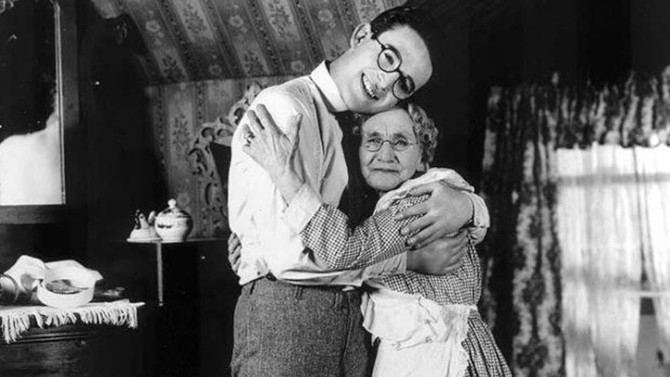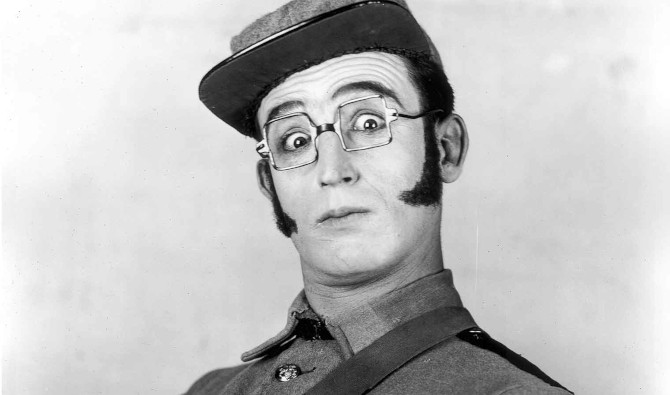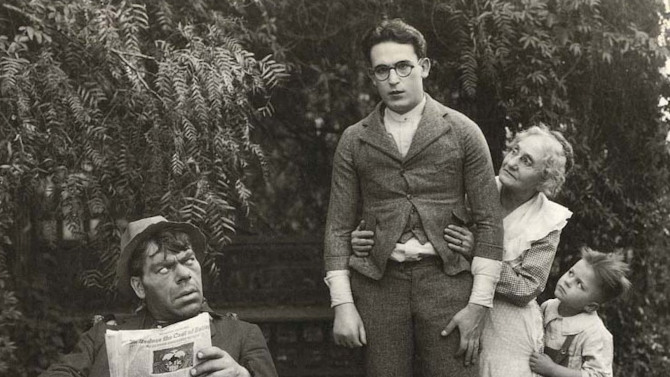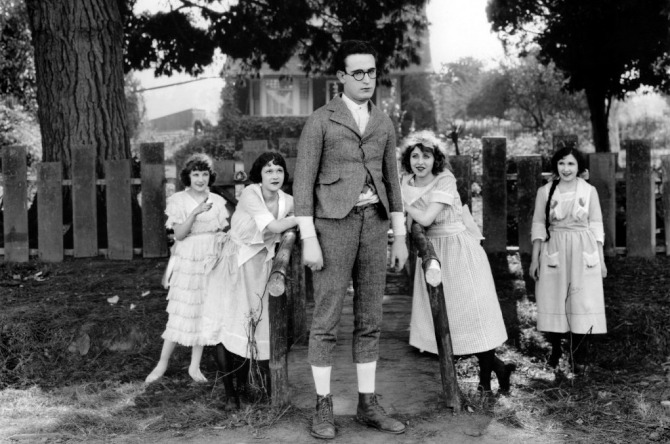Could there be anything more embarrassing than being a mama’s boy? Well, there might just be – being a Grandma’s Boy (directed by Fred C. Newmeyer). Silent comic superstar Harold Lloyd’s second feature length film following 1921’s A Sailor-Made Man, this 1922 offering, like its predecessor, spawned out of a smaller two-reel idea, growing into a richer, more in-depth narrative.
Coming out a year after Charlie Chaplin’s seminal first full length feature, The Kid, the fellow comedic actor was enthralled by his so-called rival’s film – describing it as “one of the best constructed screenplays I have ever seen on the screen. . . The boy has a fine understanding of light and shape and that picture has given me a real artistic thrill and stimulated me to go ahead”.
Starting out more as a drama before producer Hal Roach had the actor get back to work to add more laughs, Lloyd was able to mix the dramatic themes of the story with added comedy – never losing its original essence, while making it more appealing to his throng of laugh-happy fans.
Following a young man simply known as Grandma’s Boy (Lloyd), he is a chicken-hearted guy who would make Don Knotts look brave. Slim, slender, and bespectacled (in his famed horn-rimmed glasses), the Boy has his eye on a fetching young Girl (Mildred Davis – Lloyd’s own sweetheart. . . she would retire the next year after they married). . . the only problem, so does his Rival (Charles Stevenson) – a brutish bully who is willing to steam-roll anyone in his way.
A more unexpected storyline finds a vagabond drifter known as The Rolling Stone (Dick Sutherland) setting up in the quaint little community. Already spooking the timid Boy, thankfully his spunky Grandma (Anna Townsend) scares the brute off. Yet, this will not be the last we see of this jack-o’-lantern faced thug, for he will continue to terrorize the town. . . leading the Sheriff (Noah Young) to round up a deputized posse (including the Boy) in order to catch him.
Fusing these stories in a playful and entertaining way, our protagonist, in true Murphy’s Law fashion, always seems to find himself somewhere between a rock and a hard place. . . and by that, I mean a bully and a violent drifter. Fleeing from the danger one scary night (and returning home), his Grandma tells him the story of his equally twitchy Grandfather (also played by Lloyd – except with square-rimmed glasses). . . that is, until he was gifted a protective amulet from a beleaguered woman during the Civil War – giving him the bravery and courage to complete his secret military mission (a standout scene in the film – and funnily enough, the original short this film grew out of).
Not as comedically driven as many of Lloyd’s other features, this really is a drama-weighted picture. Each character is nicely developed, the narrative easily building the lopsided competition found between the Boy and his Rival, as well as the Girl’s rather oblivious, happy-go-lucky nature (somehow never seeing the Rival’s brutal treatment of the much more meek Boy). Then there is the rather scary Rolling Stone, a grifter with a face that has more character than that of Keith Richards’, walks around with more confidence than Mick Jagger, and has more beats than Charlie Watts (and by that, I mean beat downs). . . meaning no one is out of the ‘Wood’s yet. And let’s not forget about the little old Grandma. . . so engaging and energetic that Lloyd found roles for her in his next two movies (Dr. Jack and the classic Safety Last!, she passed away soon after).
Though the comedy might not be as frequent as other Lloyd films, there is no denying his innate understanding of a gag. Moments like the Boy and his Rival sitting on either side of the Girl trying to woo her – both ecstatic that she is holding their respective hand (in fact, they are holding each others’ hand); or the Boy, in a new old suit, desperately trying to hide mothballs from his crush. . . mistakenly putting them in a box of chocolates behind her back (only for both him and his Rival to have the bad luck of sampling them when she kindly offers them a chocolate), are prime examples of the how to build visual comedy.
An entertaining sixty minute feature, Grandma’s Boy is a dramedy at heart. Combining its story of a man struggling to find both love and bravery, with its go-for-broke comedic action (the climactic sequence taking place over large terrain and finding the actors in cars, on foot, and even in a wheelbarrow. . . and let’s not forget about that aforementioned Civil War scene), the final product became highly influential in the development of feature length comedies with solid doses of drama (helping further influence the likes of Chaplin to develop more well rounded narratives). So, man up. . . or should I say boy up, and see this silent film classic, you’ll discover that all is very well!




